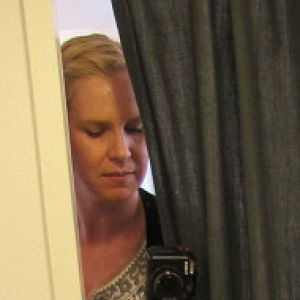The terracotta army
Sami had a physical check in a vet and everything is fine with him. (Weight 20.9 kg)
In the afternoon we visited a exhibition "The terracotta army and treasures of the first emperors of China" in Vapriikki.
The First Emperor Qin Shihuangdi had a grand plan to avoid mortality and continue ruling forever. He decided to recreate hid entire empire and government underground in clay, wood, and bronze. Over a period of more than thirty years, hundreds and thousands of labourers built him a palace for the afterlife. Surrounding it were representations of his officials, his buildings, his parks and animals; in other words, everything he would need to carry on his life without end. His body would be buried under a mound like a miniature mountain so that he would become an eternal part of China's geography. The Emperor died suddenly in 210 BC, aged forty-nine.
The terracotta army was discovered by chance in 1974. The warriors were originally brightly painted, both their costumes and bodies. When excavated, the exposure to air resulted the loss of colours. The figures vary in height according to their roles, with the tallest being the generals. The head, arms, legs and torsos were created separately and then assembled. Studies show that eight face moulds were most likely used, and then clay was added to provide individual facial features.
The figures include warriors, chariots and horses. Current estimates are that in the three pits containing the Terracotta Army there were over 8,000 soldiers, 130 chariots with 520 horses and 150 cavalry horses, the majority of which are still buried in the pits near by Qin Shihuangdi's mausoleum. Other terracotta non-military figures were also found in other pits and they include officials, acrobats, strongmen and musicians.
In the picture the first warrior is a general. Decorative tassels on his upper chest indicate his rank. The armour would originally had a colourful geometrical design on it. His long face has a stern, authoritative expression. The leaders were made taller than life-size, and the generals were average two meters in height.
Behind the general is a kneeling archer. His arms are positioned as if he were holding a crossbow and arrows. Traces of green pigment remain on sections of the armour and trousers. He has a scarf at his neck to stop the armour chafing his skin. Despite of the fact that potters were making thousands of these figures, they still took the trouble to portray details such as the stippled tread of the archer's shoe, revealing the difference in tread on the heel, sole and, instep. The hair is as scrupulously rendered as the sole of the shoe. Even the hands are realistically modelled to include the nails. It is astonishing that such a level of detail was practiced, especially on a soldier of relatively low rank.
Some others
+3 C, semi-sunny

Comments
Sign in or get an account to comment.


